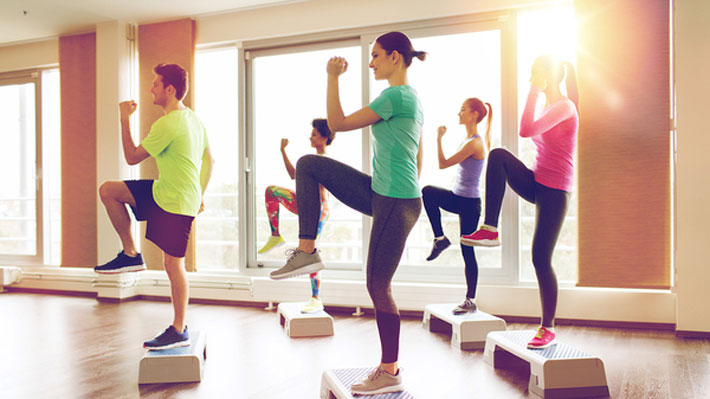HIIT: Fad or Future of Fitness?
HIIT may currently be the buzziest acronym in the world of fitness. Short for “high-intensity interval training,” it lands atop a multitude of “top fitness trends” lists. But is HIIT all it’s cracked up to be, or will it eventually go the way of vibrating belts, ineffective equipment hawked via infomercial for just “four easy installments of $29.99 each,” and celebrity fitness videos?
Here’s a closer look at this red-hot type of workout and whether it's “got legs,” along with tips for fitness centers aiming to make the most of HIIT.
What is HIIT?
HIIT is a type of training which alternates between intervals of high-intensity effort and recovery. Typically, intense intervals last anywhere between five seconds and eight minutes performed at 80 to 95 percent of an individual’s maximal effort. Recovery periods usually last as long as the intense period and are performed at 40 to 50 percent of full effort. A complete HIIT workout can take anywhere between 20 and 60 minutes.
A growing body of evidence attests to the many benefits of HIIT, including supporting aerobic and anaerobic fitness, lowering blood pressure, boosting cardiovascular health, increasing insulin sensitivity, improving cholesterol profiles, and trimming abdominal fat and body weight without sacrificing muscle mass.
Will HIIT Stay Hot?
HIIT training has been proven to be one of the most effective and efficient ways to work out. Says the American Council of Sports Medicine (ACSM) of HIIT’s popularity,
“HIIT workouts provide similar fitness benefits as continuous endurance workouts, but in shorter periods of time. This is because HIIT workouts tend to burn more calories than traditional workouts, especially after the workout. The post-exercise period is called “EPOC,” which stands for Excess Post-exercise Oxygen Consumption. This is generally about a 2-hour period after an exercise bout where the body is restoring itself to pre-exercise levels, and thus using more energy. Because of the vigorous contractile nature of HIIT workouts, the EPOC generally tends to be modestly greater, adding about 6 to 15% more calories to the overall workout energy expenditure.”
An additional attribute adding to HIIT’s lasting appeal? Versatility. Not only is HIIT training appropriate for people of all fitness levels and abilities, but it can also be incorporated into many different exercise modes, such as walking, running, cycling, swimming and aqua training, group exercise classes, and elliptical cross-training. In other words, essentially any kind of workout can incorporate the principles of HIIT meaning gym-goers can avoid boredom and keep plateaus at bay by mixing things up.
Is Your Fitness Business Making the Most of HIIT?
Now that we’ve established that HIIT has some serious staying power, every gym business should be asking itself the same question: Are you sufficiently tapping into the HIIT market?
Club Industry recommends several ways to build a strong HIIT program while distinguishing your business from other options, all backed by one underlying theme: member engagement.
For starters, introducing an element of HIIT-related competition can help get members on board. Says Club Industry,
“Competition is an incredible tool that, for members, can encourage goal setting, progress tracking, accountability and offer positive reinforcement to keep them returning to better themselves. Few things get people fired up as much as good competition, and there are many effective ways to add competition to your program in a manner that excites and motivates members, builds community and allows members to track and visualize their progress.”

One particularly effective type of gym competition? Team-based initiatives. Explains Club Industry,
“By creating teams, skill and fitness levels can average out, allowing for closer matches. The desire to help the team gives members the external motivation to work hard and stay engaged. Team-based competition encourages interaction between members that helps build community within the facility. When members create bonds and give each other positive feedback, it dramatically improves their experience and, consequently, improves member retention.”
Specifically, Club Industry recommends focusing on measurable (and shareable) results facilitated by everything from fitness tracking apps to scoreboards.

Group HIIT exercise classes are also a great way to promote a healthy competitive community. Proposes Club Fitness,
“If all athletes are performing the same workout at the same time, they will purposely, or inadvertently, be competing with one another….One athlete performing [a] workout next to another athlete can see when they are transitioning exercises and may push themselves to either stay with or beat the other person in the class. Many athletes will find someone that closely matches their fitness level and perform the workout next to them so that they will push one another.”
The takeaway? While fitness trends come and go, HIIT has serious staying power. By embracing HIIT in a way that engages and inspires members, your fitness business will position itself for both short- and long-term success. To learn more about how the latest fitness monitoring technology can support your HIIT programs, request an Accurofit demo today.




Join the conversation